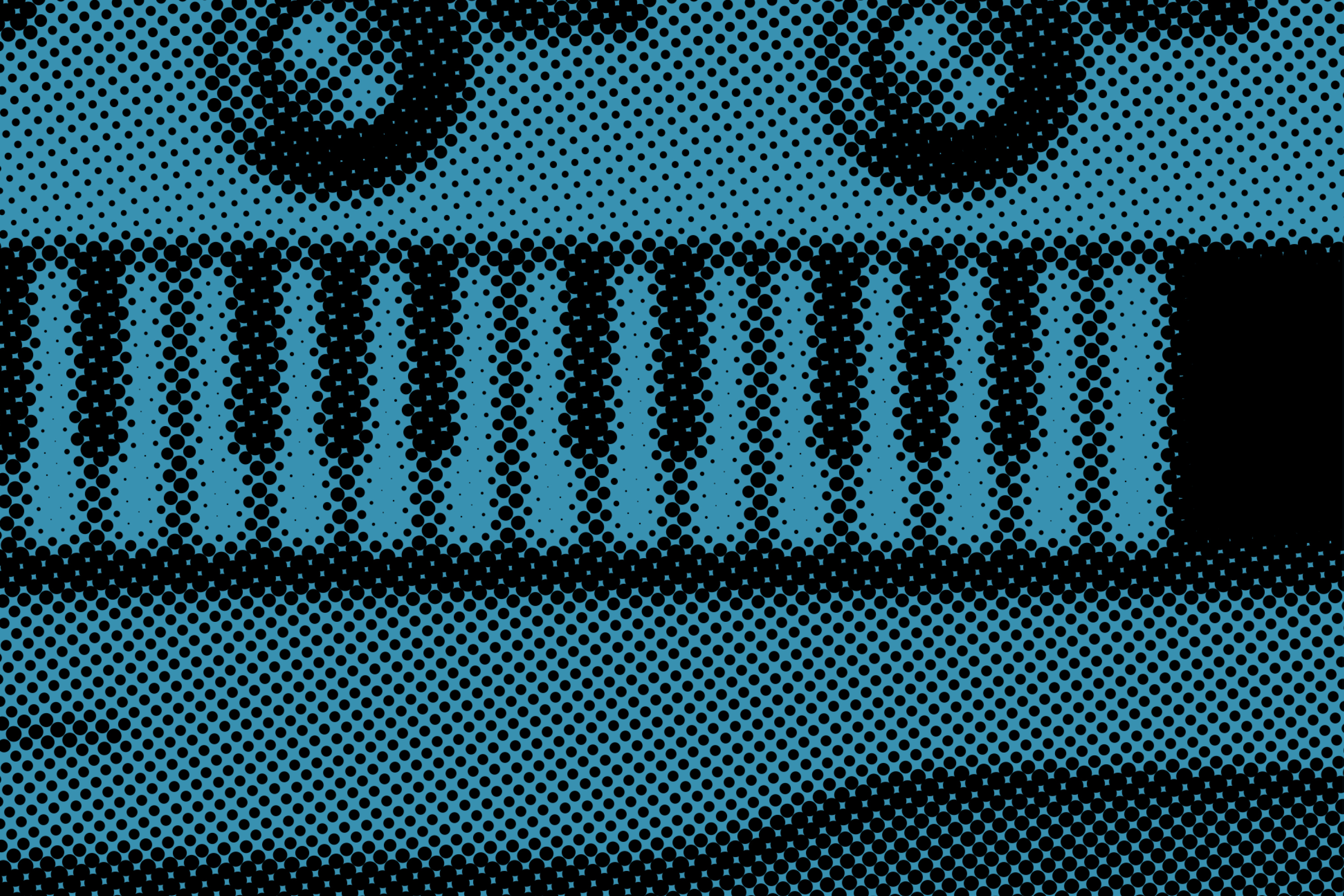Instrumental Instruments: The Fairlight
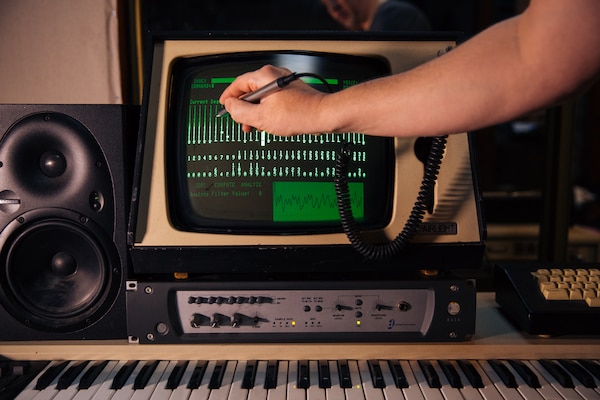
Our series on important music-making devices continues with the ahead-of-its-time synthesizer that sparked a digital revolution
In 1975, two young Australian electronics enthusiasts with just $400 to their name set out to make “the world’s greatest synthesizer.” Less than a decade later, Kim Ryrie and Peter Vogel’s company – Fairlight Instruments – boasted well over 100 employees, recruited to help them fulfill orders from high-end studios, big name producers and global music stars.
Their flagship product, the Fairlight CMI, cost an eye-wateringly expensive £100,000 a pop in today’s money. And over the course of the machine’s production history, only between 200 and 500 were sold. But the cutting-edge “Computer Musical Instrument” helped define the sound of music in the ’80s, featuring on countless records from artists as diverse as U2, Yes, Kurtis Mantronik, Klaus Schulze and Ryuichi Sakamoto.
Listen to many iconic songs from the era, and you’ll hear its influence. It was the Fairlight that helped provide the fizzing drum hits and pitched-down vocals on Yello’s “Oh Yeah,” the intricate, African-influenced rhythms of Peter Gabriel’s “San Jacinto” and the thrusting groove at the heart of Frankie Goes To Hollywood’s “Relax.” Amongst its library of preset sounds was a sharp orchestral stab (ORCH5), and a breathy vocal noise (ARR1); both ended up appearing on hundreds of records.
“I think in its golden days, it probably wasn’t necessarily sought after for the things I would seek out now – just that tone, and that low-bit quality,” says Com Truise, whose 2011 “Fairlight” single on Ghostly International paid tribute to the machine. “I feel like it really has so much character. I don’t think much else sounds like it. You can replicate that texture and tone to your sounds, but I still think that vocal sample from the Fairlight is still one of my favorite sounds."
There’s no doubting that the Fairlight CMI was a groundbreaking invention, capable of doing things that no other musical instrument had done before. Its genesis began when creators Kim Ryrie and Peter Vogel met Tony Furse, a representative of computer microchip manufacturer Motorola.
“He’d already, incredibly enough, started designing his own digital synthesizer,” Ryrie remembers. “He’d got a grant from the government, and an order from the Canberra School of Music for the first unit. He’d designed the parallel processor architecture, which was incredibly clever for its day. That helped us leapfrog the whole process.”
Furse’s creation was called the Quasar M8. He didn’t have time to finish developing it, so encouraged Ryrie and Vogel to continue his work. “We spent a year on it, and then decided what he had was too complicated,” Ryrie says. “There were 40 circuit boards, and most of them were different. It used about two kilowatts of power, so the room would get really hot. It was unserviceable. We thought, ‘We really have to rethink this.’”
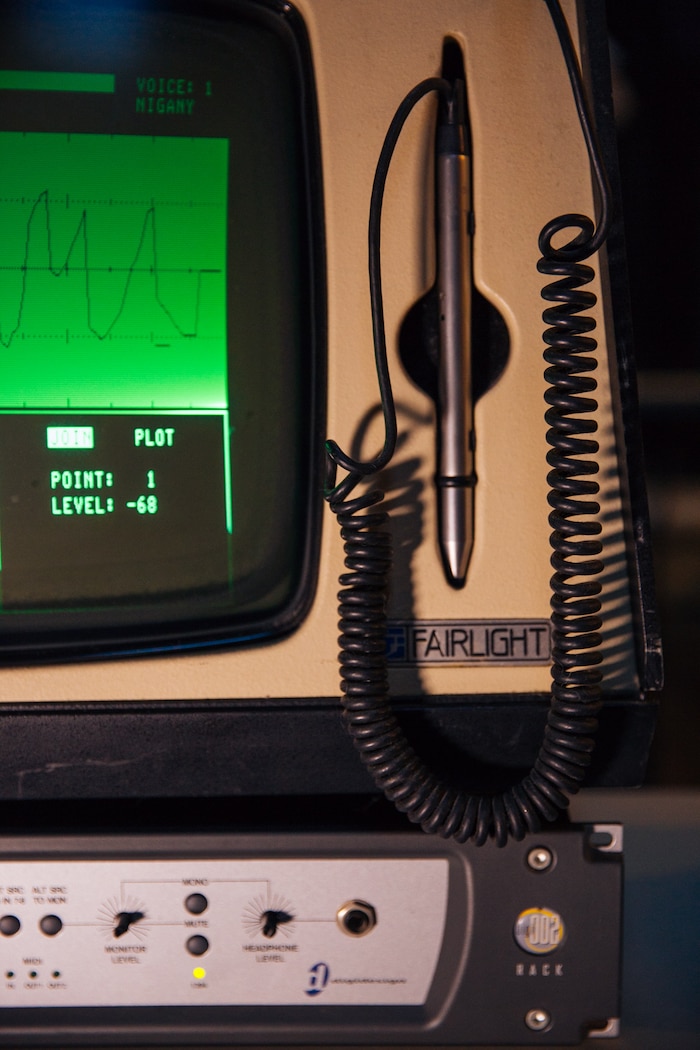
By 1978, they’d finally got a working prototype that successfully combined Furse’s work with their own revolutionary innovations. It was something of a beast, comprising a bulky computer unit with a custom-made operating system, a QWERTY keyboard, a piano style keyboard and a monitor with an attached light pen. The latter could be used to edit the harmonics of the all-digital sounds, which would appear on screen in the form of a bright green waveform display, or control numerous other functions, such as the basic composition software the Canberra School of Music had demanded.
While far-sighted and groundbreaking, there were still problems to overcome. For starters, it didn’t sound very good. “Although you got interesting electronic sounds, you still couldn’t get natural sounds in any predictable way,” Ryrie says. “It was about that time that these bigger memory chips – 16 kilobits – began to become available. That was enough to record and store half a second, or a second of sound, depending on the source.”
Ryrie and Vogel quickly realized that they could record short “samples” of sounds from real instruments and turn those into preset sounds. While these often only vaguely resembled the instruments they purported to be, it was still a giant leap forward.
“We did think it was cheating at the time,” Ryrie says. “It was all pretty rough. Yet because it wasn’t using sample rate conversion and stuff like that, it felt very solid. People liked the sound of the samples, and our pseudo 16-bit system.”
By the time production started on the Fairlight CMI Series I in 1979, Ryrie and Vogel had added the ability to record, edit and shape samples. While it was pretty rudimentary stuff by today’s standards – under half a second of sound at a sample rate of 40 kilohertz, or up to a second and a half at a much lower rate – it was nevertheless hugely revolutionary.
“The way that Fairlight implemented their pitch scaling was interesting,” says Tim Curtis, a CMI enthusiast, collector and occasional service engineer based in the Los Angeles area. “If you sampled a sound, say a note of a piano, you would then determine the sample rate by where you wanted that pitch to be played on the keyboard. Then you would have to tune things, just to make sure everything would loop properly and scale. The waveform display actually had a purpose – it wasn’t just that it looked cool... but it did look really cool.”
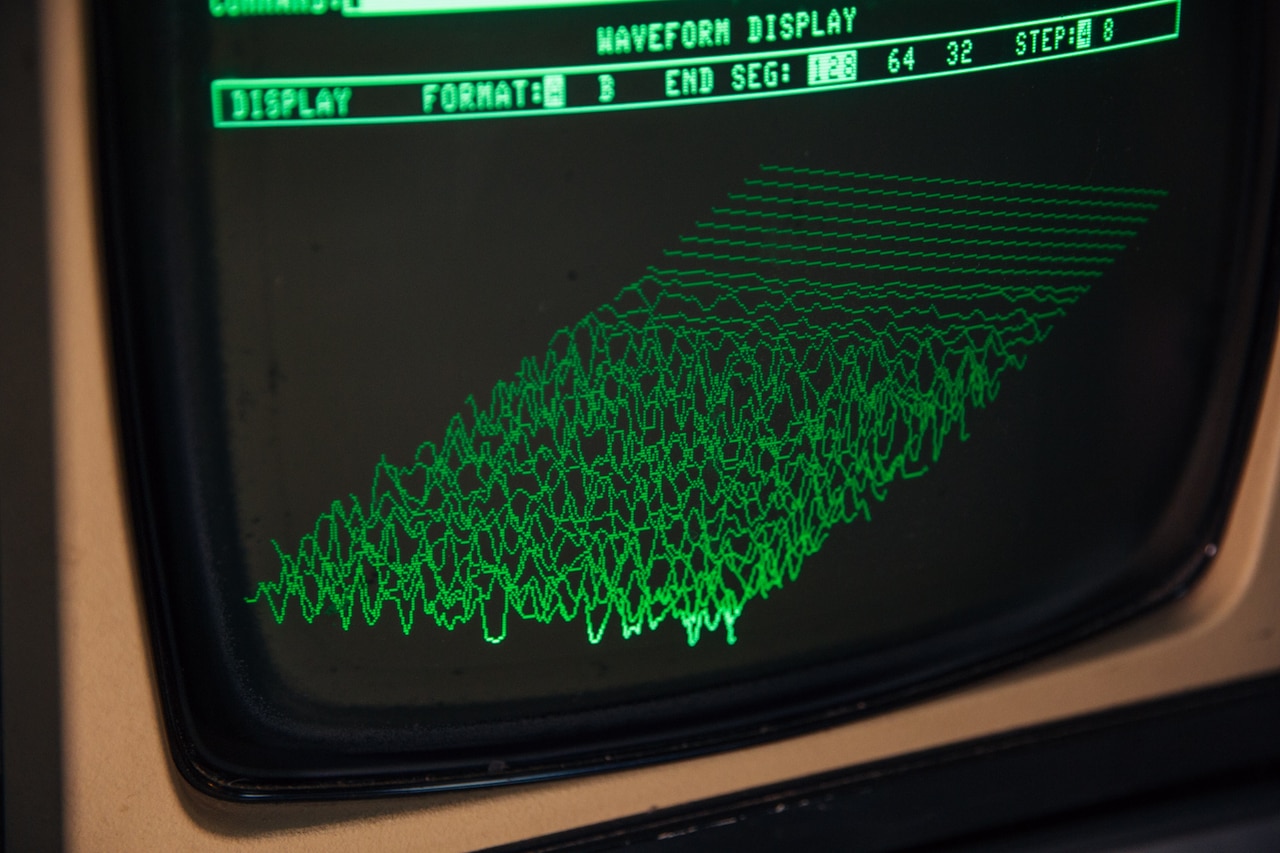
The Fairlight CMI’s now notorious waveform display was certainly futuristic for the time. It was the first time musical sounds had been graphically displayed in this way, and it looked space age. This undoubtedly helped Fairlight Instruments garner extensive media coverage around the world. It also wowed would-be purchasers during the numerous demonstrations undertaken by Vogel, Ryrie and their Los Angeles-based friend, Australian audio engineer Bruce Jackson.
“He just said: ‘bring it over and we’ll show it around,’” Ryrie remembers. “One of the first people we met was Geordie Hormel, who owned the Village Recorders studio in Los Angeles, where [Fleetwood Mac’s] Tusk was being recorded at the time. He just pulled out his checkbook and ordered one on the spot. Soon after, Stevie Wonder bought one. We were lucky – without doing any marketing at all, we were pretty quickly in contact with the sort of people that could afford to buy them.”
Geordie Hormel also scored something of a coup by getting his friend Robert Moog involved in marketing. For Kim Ryrie, who fell in love with synthesizers after hearing the sounds of Moog’s pioneering ’60s and ’70s models, having the great man’s backing was particularly special.
“Bob agreed to present it to the press, because he loved it,” he says. “He gave a presentation to about 150 journalists. That definitely didn’t hurt in terms of marketing. We were pretty lucky, because we didn’t have much idea about marketing, or business for that matter.”
It wasn’t long before demand for units rocketed, no doubt helped by the enthusiastic support of artists such as Peter Gabriel, who was so bowled over by the CMI that he co-founded a company to distribute it in the UK. By the time the Series IIx arrived in 1983, complete with dual floppy disk drives, a 32-disc library of preset instrument sounds and basic MIDI capability, the computer had already made a significant impact on popular music.
While many artists and producers embraced the cutting-edge techniques pioneered by the Fairlight CMI, few utilized it quite as successfully as Trevor Horn. Having first been introduced to the machine by his former Buggles and Yes bandmate Geoff Downes, Horn used it extensively in his pop productions.
“Trevor brought a Fairlight and said, ‘Take it home, get into it, get some samples together and then we’ll do some sessions,’” reveals JJ Jeczalik, who went on to become one of the most successful freelance Fairlight programmers of the 1980s. “I did that for Trevor for two or three years. I would sit in my house, in a room with the Fairlight and a ReVox A77 quarter-inch tape machine.”
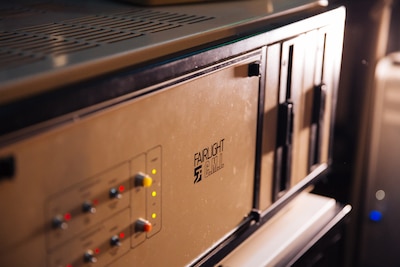
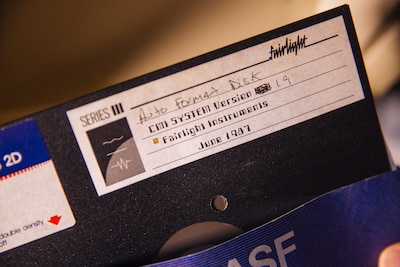
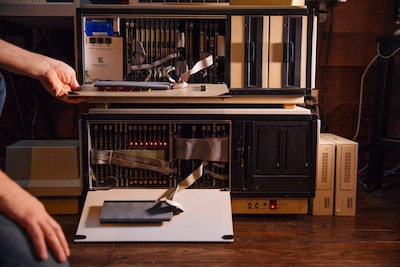
Horn and Jeczalik were astute. They knew that the Fairlight’s sampling technology opened up all sorts of artistic possibilities, not to mention a whole new range of quirky, computer-assisted sounds. Crucially, they also understood its very real limitations.
“I did this session with the CMI for Paul McCartney,” Jeczalik reminisces. “He had some sounds of a trombonist on tape, which I put into the Fairlight. Paul then started playing chords and said to me, ‘This doesn’t sound like a horn section.’ It sounded a bit like a Hoover, because it was basically a whole load of samples being looped and played, and it was terrible. We both realized at that point that expecting the Fairlight to replicate musical instruments was a complete waste of time. It was very good at some, and pretty bad at others.”
Jeczalik soon worked out that the best way to unleash the full potential of the Series II and IIx CMI was to make use of both the sampling capability, and its revolutionary new sequencer, Page R.
Originally intended to be a drum machine style “rhythm sequencer,” Page R allowed users to chain together individual sounds, or entire bars of music, to create backing tracks, or even entire pieces of music. It wasn’t Fairlight’s first stab at making a sequencer – the clunky “Music Control Language” had been featured on earlier units – but it had far more impact. It was arguably the first “proper” software sequencer, something that would later become the backbone of electronic music production.
“Page R transformed the whole machine,” Jeczalik says. “You had eight mono tracks, and you could copy and paste a bar – not by dragging and dropping, but by typing the command. You’d just go bar one, bar two, repeat, and it would do it for you very quickly. You couldn’t drag and drop, as you would nowadays, but you could see where the beats were, and you could copy bars, or groups of bars. It was a quantum leap. You could program a bar and copy it into sixteen bars in no time at all.”
This combination of Page R programming and inventive sampling would become the backbone of Jeczalik’s most famous project, the Art of Noise. Inspired by after-hours sessions with fellow Horn production team member Gary Langan (and, later, composer Anne Dudley), the Art of Noise specialized in making quirky, off-kilter art-pop records and eccentric audio collages, all built around Jeczalik’s vast library of homemade samples.
Whereas Horn had initially seen the CMI as a box-of-tricks to add gimmicky intros or odd textures to his productions (what Jeczalik describes as “unexpected detail”), the Art of Noise put the computer at the forefront of the action.
“The Fairlight was at the core of what we did,” Jeczalik says. “In those early days we never started a track without the Fairlight – the samples, the ideas, the craziness, everything started there.”
The only person who really had a clue what was going on was the programmer, because it was just so complicated.
Despite the efforts of Horn, Jeczalik, Langan and others to use the CMI in an artistic way, it still divided opinion. Not every electronic musician, producer or programmer – even those who could probably afford to buy one – fell for its charms.
“The only person who really had a clue what was going on was the programmer, because it was just so complicated,” says Pet Shop Boys programmer and freelance producer Pete Gleadall. “With some later things, Neil [Tennant] and Chris [Lowe] could sit down and play stuff. They didn’t have to describe it, which they did when they were using the Fairlight.”
Industrial funk mavericks Cabaret Voltaire came up close and personal with a Fairlight CMI for the first time during the making of 1984’s Micro-phonies, which was mixed at Horn’s Sarm West studio. “I was fascinated by it,” admits former Cabs member Stephen Mallinder. “It was like: ‘Man, these Fairlights cost more than a house – that’s got to be amazing! When we saw one being demonstrated, we were kind of like, ‘I don’t think we want to use it.’”
Famously, the Musician’s Union wasn’t particularly keen on it, either, believing that the “orchestra in a box” – as some journalists had called it – would put their members out of business.
“It didn’t help to have some people that owned a Fairlight saying things like ‘the studio musicians could never keep time properly, and this one does,’” Kim Ryrie admits. “Initially it was a problem, but then everyone started to realize what the limitations were. We never dreamt, for example, that people would actually start to sample bits of music off other people’s recordings and use those. We couldn’t believe it.”
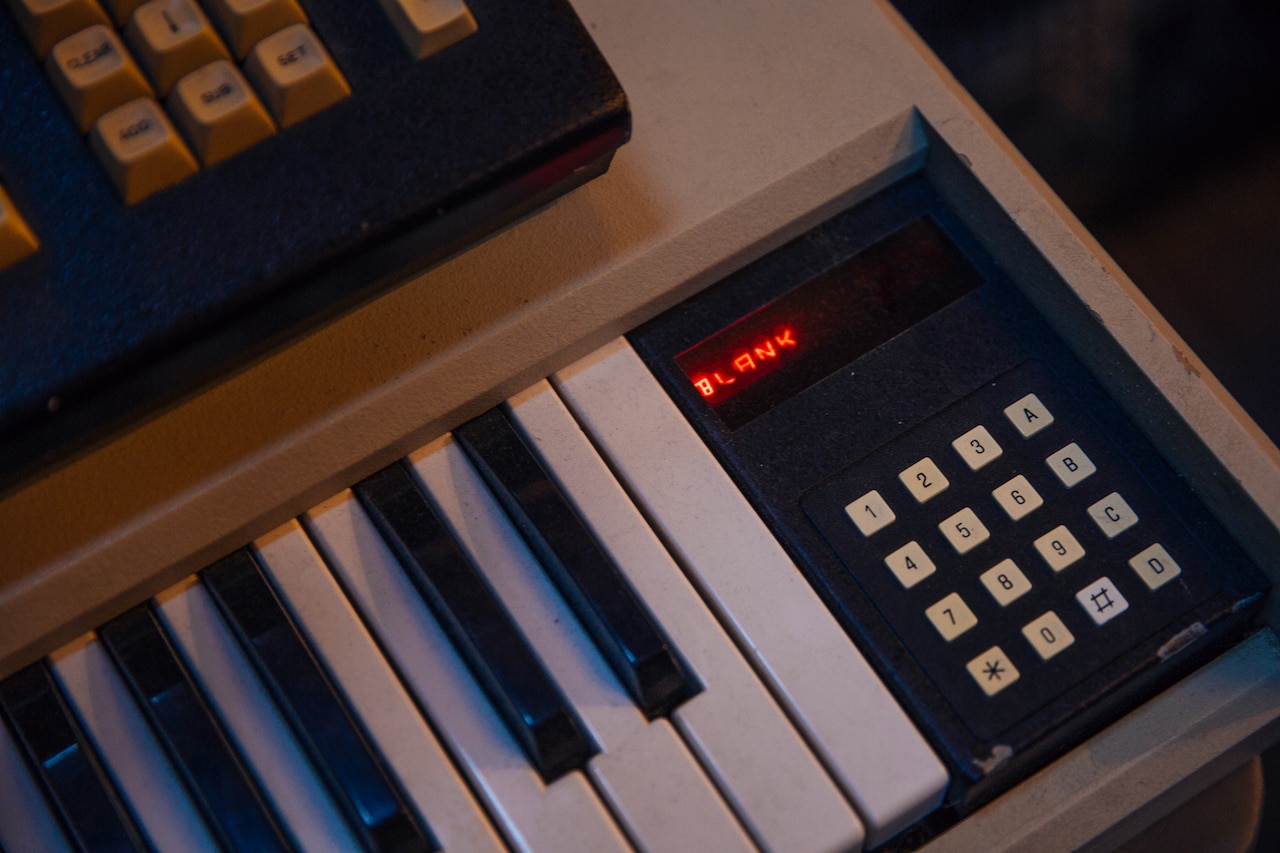
Ryrie and Vogel had opened Pandora’s box. By the late ’80s, sampling technology had not only become more powerful, but also affordable. Producers and musicians could buy a standalone AKAI sampler, a digital synthesizer and a MIDI-enabled Atari ST computer, complete with a choice of sequencing and editing packages, for a fraction of the price.
As a result, even enthusiastic supporters of the Fairlight such as the Pet Shop Boys, who had bought their own Series III to record demos on, began to abandon the machine. “When making the Very album in 1993, we transferred Chris’s Fairlight demos to an Atari ST,” Pete Gleadall says. “I always thought that was quite funny, transferring things from this huge expensive beast onto an Atari. I ended up sampling up some drums from the Fairlight using an AKAI sampler, and then running those samples in the Atari.”
It allowed people like me, who had no real musical or programming experience, to get into creating music.
Less than 20 years after Ryrie and Vogel had set out to make a digital synthesizer, their pioneering computer system was obsolete. It now lives on mostly as an iPad application based on the duo’s original operating system and sound library. But it is nonetheless remembered as a game-changing piece of music technology.
“It introduced the notion that you could sample and sequence, and didn’t have to be an out-and-out musician to use the system,” Jeczalik says. “It was the start of the whole voyage into enabling anybody to do pretty much whatever they wanted sonically. It allowed people like me, who had no real musical or programming experience, to get into creating music. That wasn’t possible before.”
The Fairlight CMI didn’t democratize music production – it was too rare, expensive and complex to do that – but it pioneered technology that would ultimately do that.
As Stephen Mallinder says, “It was the portent of things to come, in terms of how technology was, all of a sudden, going to become a default way of doing things. It was like you’d been riding round on motor scooters, and then all of a sudden somebody’s got a plane. It felt to me like the start of music as a technical specialism.”
To learn more, listen to the RBMA Radio show Instrumental Instruments: The Fairlight, hosted by Jordan Rothlein and featuring many of the artists included in this article.
Header image © Mitch Maher
